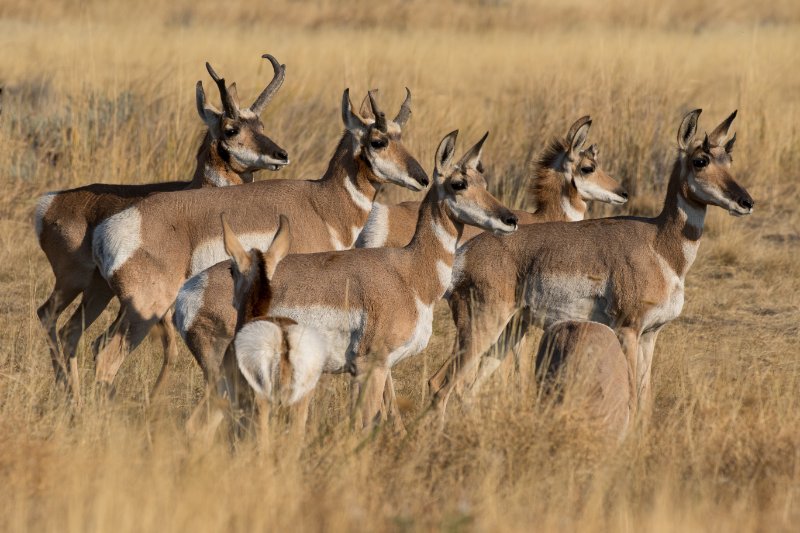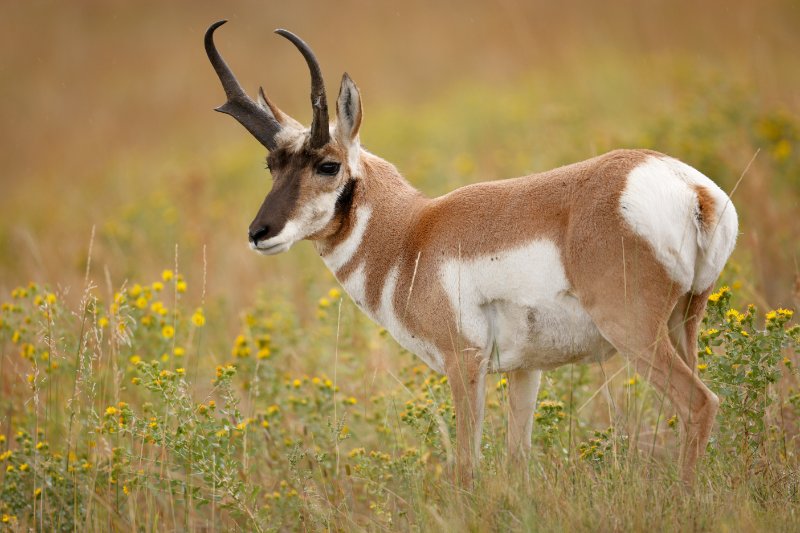“The Speed and Grace of the Pronghorn Antelope: Nature’s Fastest Land Animal”
Ever seen a creature sprint with such grace and agility that it seems almost magical? That’s the Pronghorn Antelope for you – an intriguing species with a deceptive name. Often taken to be a type of antelope, the Pronghorn sits squarely in the antilocapridae family. Let’s journey into the life of this one-of-a-kind beast.
The Unique Features of the Pronghorn Antelope
Resembling an antelope closely, this organism displays a slight build akin to a deer’s – slender and dainty. Standing about four feet tall and weighing between 100 to 125 pounds, the pronghorn is certainly light-footed yet sturdy in its stride. Sporting large, bulging eyes at the sides of its head – a common trait among creatures warding off predators – this species certainly strikes a dignified pose.
Horns that grow directly above each eye grace males and females alike – although in males they can stretch up to 20 inches, far outshadowing the females’ modest four inches. Having a coat that blends effortlessly with its surroundings, tan or brown and white in color, provides a vital tool for survival.
Also Interesting: Nilgai Antelope
Natural Habitat of the Pronghorn Antelope
Seeking out open plains for their livelihood, the pronghorn range from Texas to California and further north to Saskatchewan in Canada. Grasslands and brushlands form their preferred habitat. With an active lifestyle, you can spot these creatures exploring their surroundings any time, day or night.
Often wandering either solo or in small herds, they lead somewhat nomadic lives, traversing vast distances over a year. Yet, in the chilling clasp of winter, many will huddle into larger groups for warmth and security.
The Pronghorn Antelope’s Special Abilities
Sure, at first sight, the Pronghorn Antelope might appear ordinary. However, this creature has evolved to excel in its natural survival skills. Not gifted with jumping ability and smaller in size, it relies on pure speed to evade danger. With this approach, it sure does impress – recorded as the second fastest land animal, next only to the cheetah.
While estimates of its top speed often land around 50 miles per hour and the cheetah’s incredible speed extends beyond 120 miles per hour, the seemingly humble pronghorn outlasts the cheetah in maintaining its running speed over longer periods. This trait becomes a lifesaver when chased by predators such as cougars, bobcats, wolves, and coyotes. Even against the aerial threat posed by golden eagles to their young ones, a pronghorn’s speed works wonders.
- Pronghorns have remarkable eyesight. This allows them to spot movement up to four miles away.
- They emit a musky smell when sensing danger, which can be detected up to one mile away.
- When threatened, they raise their tail hair to alert others, which can be seen two miles away.
Related Article: Big Bull Elk
Conservation Status of Pronghorn Antelope
As the last remnant of the antilocapridae family, the Pronghorn Antelope luckily hasn’t yet found itself on the endangered species list. Classified as ‘least concern’, there exist strict laws when it comes to hunting these creatures. Successful efforts to augment their population have been seen, leading us to hope for a future with more of these fascinating beasts.

